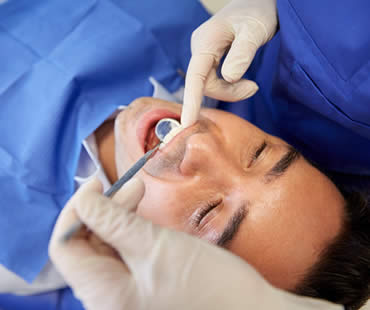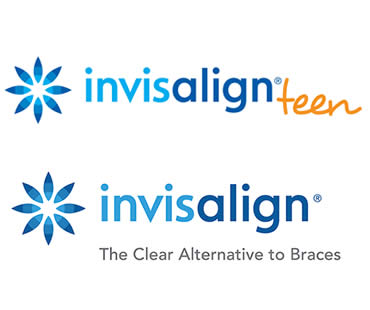
No matter how much you want to preserve your real teeth, it’s not uncommon for people to lose teeth. It may occur with age, decay, gum disease, or injury. If this happens to you, there’s no reason to go through life missing teeth in your smile. It’s better to quickly see your dentist for replacement teeth, so that you avoid shifting of your remaining teeth, speech problems, or saggy facial muscles. One solution that your dentist will likely offer to restore your smile is dentures. Here are some tips to help you select the right dentures for you.
Dentist
An important step in the process of getting dentures is making sure you have a qualified and experienced dentist treating you. Most dentists provide dentures as part of their services, or you may choose to go to a prosthodontist. This type of specialist focuses on restorative dentistry. No matter who you choose, make sure that you are confident you will get dentures that meet your specific goals and needs.
Type of dentures
There are several types of dentures available, each with their own attributes. These are the main kinds:
- Full dentures – an acrylic appliance that replaces all of the teeth in your upper jaw. These are functional and replicate your real teeth, and are usually comfortable when fitted correctly.
- Partial dentures – these replace one or two missing teeth using a dental arch. Partial dentures are made of acrylic, metal, plastic, or a combination of these materials. These are attached with a clip that holds them in place in your mouth.
- Permanent dentures – these dentures are permanently attached and require almost no maintenance. They are the costliest of the types of dentures.
Color
Dentures are available in various shades of white so that you can select the color that is most natural for you. Be careful about choosing the brightest white color, which may look unnatural compared to the color of your real teeth. Your dentist will help you find a neutral color that looks best with your smile and complexion.
Schedule your appointment at our Ottawa dental office

If you have to think twice about smiling because you’re embarrassed about your yellowed teeth, then it’s time to do something about it. You might consider having your teeth professionally whitened for quick and effective results, but first you may want to try whitening your smile at home with these natural methods.
Hydrogen peroxide:
Most teeth whitening products you find on store shelves contain hydrogen peroxide. The liquid creates bubbles on your tooth enamel that helps remove stains. The higher the concentration of peroxide and the longer you leave it on, the whiter your teeth will become. However, be careful because too much contact can lead to tooth sensitivity. Some people enhance the whitening properties of hydrogen peroxide by mixing it with baking soda to form a paste to put on the teeth.
Strawberries:
Regularly using strawberries on your teeth can whiten them. Just cut them in half and rub them on your teeth, allowing the juice to penetrate. After a while of using this technique, you should notice your teeth becoming brighter.
Lemon or orange peels:
Rubbing the peels of lemons or oranges against your teeth and leaving the residue on for a few minutes can whiten your smile. Be sure to rinse your mouth afterwards. Don’t leave the peel extracts on your teeth for too long because the acidic content may eventually harm your tooth enamel.
Apple cider vinegar:
Stubborn stains like those from coffee or smoking can be especially hard to eliminate. Rubbing apple cider vinegar on your teeth is one way to combat persistent stains. Apply it for no more than ten minutes and then rinse your mouth, because you don’t want to damage your tooth enamel. It take one to two months of consistent daily use to achieve a whiter smile.
Brush immediately:
The most well-known way to maintain a white smile is to brush your teeth after every meal, as well as after drinking a dark colored beverage. This helps get rid of stains and prevent new ones from forming.
Our dental office is located in Ottawa

Sedation dentistry is often hailed as a solution to all of a patient’s problems regarding dental therapies. It can address anxiety, fear, stress and pain. It can provide a comfortable experience for the dental patient, allowing the dental professional to work safely and quickly. As with any pharmacological agent, there are risks, and before you agree to any sedation dentistry option, it is smart to educate yourself about some of those risks.
While single doses of oral sedatives such as Valium or Halcion are unlikely to harm a patient, there are concerns regarding multiple doses of these drugs that could potentially cause a patient to be overly sedated, or even completely unconscious. Because each patient has a different metabolism, drugs can take between twenty minutes and an hour to become fully effective.
These time-delay issues are not problematic for inhaled sedation or for IV sedation, as these types of sedation dentistry are effective almost instantaneously. For oral sedation, however, a dentist who administers more than one pill could cause an overdose if the medicine kicks in at the same time. Most dentists lack both the equipment and the training to effectively and quickly address an overdose in a patient who is unconscious.
In 2000, a group known as the Dental Organization for Conscious Sedation was launched. Its purpose is to train dentists on sedation dentistry methods such as how to properly monitor a patient during a dental procedure to ensure that their heart rates and oxygen levels are healthy. Despite this, there are still concerns about adverse effects of adults with oral conscious sedation. There have been no reported adult deaths from overdosing; however, some children have died from oral sedation, leading to the practice being recommended only for adults.
If you are about to undergo a prolonged dental procedure, or if you are considering sedation dentistry to address personal anxiety or a dental phobia, look for a dentist who has received training in sedation dentistry and has high levels of experience to ensure that your procedure is as safe and comfortable as possible.
Our dental office is located in Ottawa

Modern technology is constantly making strides in improving dentistry, and the area of teeth straightening is no exception. In order to get your dream smile, you don’t have to be stuck with a mouth full of unsightly and uncomfortable metal braces any longer. Transforming your smile is now possible with a hidden product called Invisalign.
Also referred to as invisible braces, Invisalign utilizes clear plastic aligner trays to move your teeth into better positions. The series of customized trays are fitted for your mouth to gently move your teeth over time. Because they are created specifically for you, they are more comfortable than you might think and achieve their goal with minimal soreness. This is a great benefit over the painful and irritating process of traditional braces.
Wearing the clear aligners gradually shifts your teeth, and every few weeks your dental professional provides a new set of aligners to continue moving your teeth toward the final goal. This process is repeated until your teeth have moved into their desired positions, giving you a straight and attractive new smile. The aligners should be worn about 22 hours a day for best results.
Patients of all ages may be candidates for Invisalign. This technology is appealing to adults because it avoids the embarrassment of noticeable braces during professional and social encounters, and with teens who want to avoid the ridicule of a metal smile during an often emotional time of life. There is even a special version of Invisalign made for teens, which has a blue-dot display to remind the young adults about consistent wear and when it’s time to switch trays.
One of the other major benefits of Invisalign is that the trays are removable, making eating and hygiene easy. There are no diet restrictions like with traditional braces, and the cleaning hassles of metal brackets and wires does not exist.
If you are wanting to improve your smile with orthodontics, consider the revolutionary solution of Invisalign. It can keep you smiling throughout the entire process.
We look forward to seeing you in our Ottawa dental office

It is vital for parents to understand not to wait until an oral health problem arises to begin dental treatment for their kids. Parents should be aware that in order for children to have the best chance for healthy teeth and gums throughout life, preventive dentistry is one of the keys.
Good oral care should begin when your child is an infant. As soon as babies start drinking milk, sugars can attack the gums even though there aren’t any teeth yet. To avoid damage, clean your child’s gums by gently rubbing them with a damp soft cloth. Around age one, schedule your child’s first appointment with the dentist. The examination will include looking for any issues, teaching home care, and allowing your child to become accustomed to a dentist setting.
As you child grows, dentists and parents can partner together to teach preventive dentistry habits to children. Dentists can show parents the ideal ways to guide children in proper brushing and flossing, and parents can ensure that the methods are carried out consistently at home. You and your dentist may decide together as your child grows whether to opt for dental sealants to help protect your child’s teeth from potential decay and cavities.
Another aspect of good oral health that parents should be involved in is providing nutritious foods for their children. Your dentist can educate your family on the best foods for your teeth and gums, as well as the foods and drinks to avoid. Some items are known to contribute to tooth decay, gum disease, and staining. Teaching your child to make healthy diet choices will promote a healthy mouth.
Preventative dentistry both at home and in your dentist’s office will make your child feel confident about oral care and become comfortable with the dentist. If the time comes for more extensive services, your child will likely trust the dentist and have less apprehension about the dental visit. Good preventive care, however, helps avoid problems and your child will be less likely to encounter major problems requiring painful procedures and lots of time in the dental chair.
If you need a dentist in Ottawa contact us today

Teaching your kids good dental habits and making sure they get dental care are some of the most important things you can do for them. Guidelines for helping your child improve their oral health depend upon their ages. Here are some oral health tips for various stages of childhood.
Infants (up to 2 years):
It’s never too early to begin oral care! Clean your baby’s gums with a damp cloth after feedings to remove bacteria. Once the first tooth erupts, use a soft toothbrush for babies to gently brush the teeth and gums. Use a pea-sized dab of toothpaste and brush at least twice a day. Around the first birthday, begin taking your child to the dentist for regular checkups.
Preschoolers (2-4 years):
This age group has the highest incidence of tooth decay, because most preschoolers love sugary foods but may not love brushing their teeth. Brush your child’s teeth yourself until they are old enough to do it well, but continue supervising the process to make sure all areas are clean. Consider flavored or character fluoride toothpastes if it encourages your child to brush. Also, limit the amount of sugary foods and drinks your child consumes.
Young elementary (5-7 years):
As more and more teeth grow in, your child needs to brush carefully with fluoride toothpaste. Make sure all areas of your child’s mouth are being reached, and help your child use dental floss to clean between teeth and gums. Continue helping your child make healthy diet choices.
Older kids (over 8 years):
Most children should be able to brush on their own by age 8, but performing spot checks is a good idea to make sure they are doing a good job. Teach your child to brush after meals, especially when eating sugary or sticky foods, and emphasize the importance of flossing every day. Continue taking your child for regular dental checkups every six months, which will help create a life-long habit of good oral care.
We treat patients from Ottawa and the surrounding area







